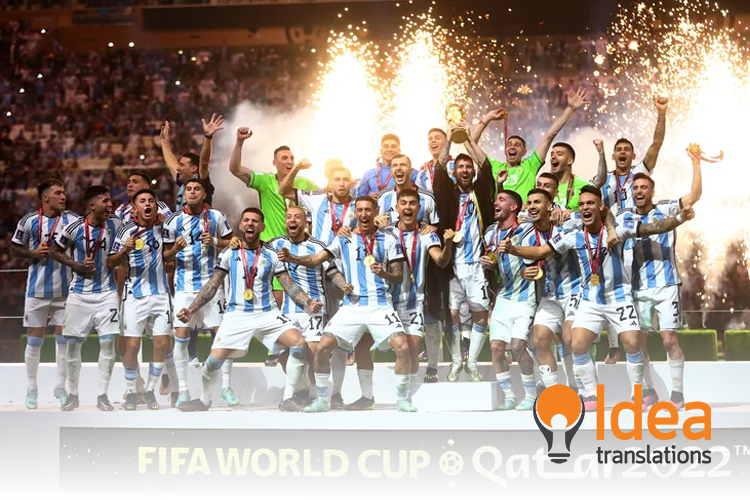
What were the most spoken languages in the Qatar World Cup
A long-awaited event by millions of people like the Football World Cup brought along astounding sociocultural diversity: more than 3 million tickets were sold for the matches (split into eight stadiums) and millions of fans watched the games from their houses through several platforms. Inside and outside the field, such passion for the sport brought together people from numerous backgrounds, traditions and realities.
The linguistic aspect was no stranger to this. Followers and players from 32 countries met in the small State of Qatar. What languages were present there and which were the most predominant ones?
Voices from All Continents
Thirteen countries from Europe, eight from America, five from Africa and one from Oceania participated in the FIFA World Cup Qatar 2022. As reported by the organizing body and the different official venues. Doha’s waterfront promenade (the Corniche) attracted more than 2 million people since the beginning of the tournament and the traditional market of Souq Waqif became another meeting point for fans.
It is clear that this diversity in nationalities was also reflected in languages. The host country’s official language is Arabic, which is also spoken in Saudi Arabia, Morocco and Tunisia, which also played in the World Cup. “Most Qataris speak a dialect of Gulf Arabic similar to that spoken in surrounding states. Modern Standard Arabic is taught in schools, and English is commonly used. Among the large expatriate population, Persian and Urdu are often spoken.”, states the British Encyclopedia.
Qatar 2022 is the first World Cup that has taken place in an Arabic nation and only the second one in Asia, after the 2002 edition which was held in Japan and South Korea. Source: Statista
Moreover, Europe, the continent with the most teams playing the World Cup, has the most linguistic diversity in relation to its surface: English, Welsh, French, Spanish, Dutch, German, Polish, Danish, Croatian, Serbian and Portuguese. All these languages shared the stadiums and the streets during the competition.
Some African countries, like Senegal, brought along their official language (French). The Spanish spoken in Costa Rica, Ecuador, Argentina, Mexico and Uruguay was also added to the mix. Not to forget the Spanish spoken in the United States, home to more than 62 million people of Hispanic and Latin backgrounds. In this country, the whole event was broadcasted in both English and Spanish on the different available channels.
The highest attendance in the history of the FIFA World Cup since the 1994 final was seen at Lusail Stadium, where 88,966 fans witnessed the Argentina v. Mexico match. Source: FIFA
The official language in the USA, Canada, England and Australia was also among the most listened to. In fact, in most participating countries –even in Arabic nations like Morocco, Qatar and Saudi Arabia– English has been gaining popularity in the last few years. Furthermore, in places such as South Korea, a large number of English words and phrases has infiltrated the language, as a result of the American presence in the country since 1950. Likewise, in African countries, such as Ghana and Cameroon, English is the official language.
In any case, although English tends to act as the “universal language”, if we seek to define which language was most predominant in terms of number of speakers, Spanish was the one with the most representation in Qatar during the World Cup. That is, adding up all the people who speak this language and who took part of the event both inside and outside the field.
To conclude, the United Arab Emirates, the United Kingdom, Japan, South Korea and Spain were the top booking origin countries for travel to Qatar for the World Cup.



